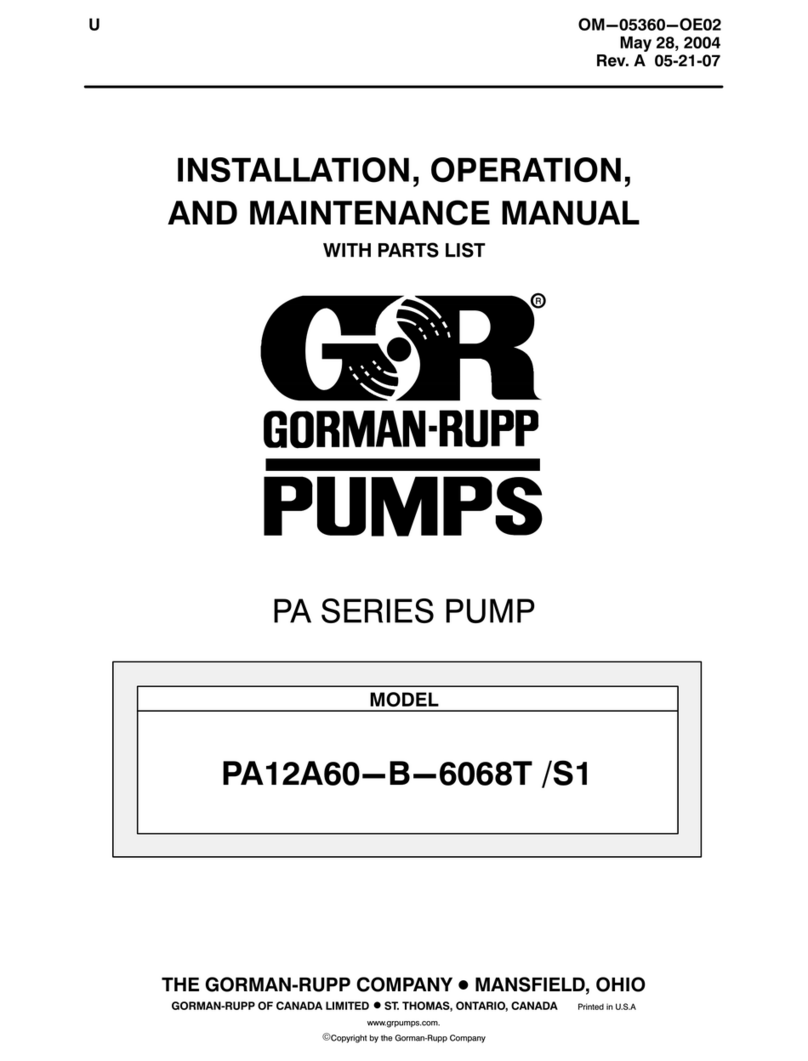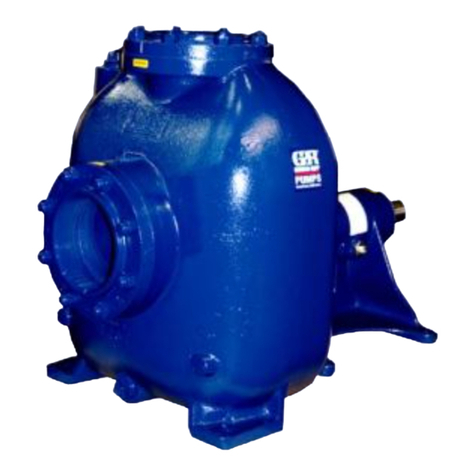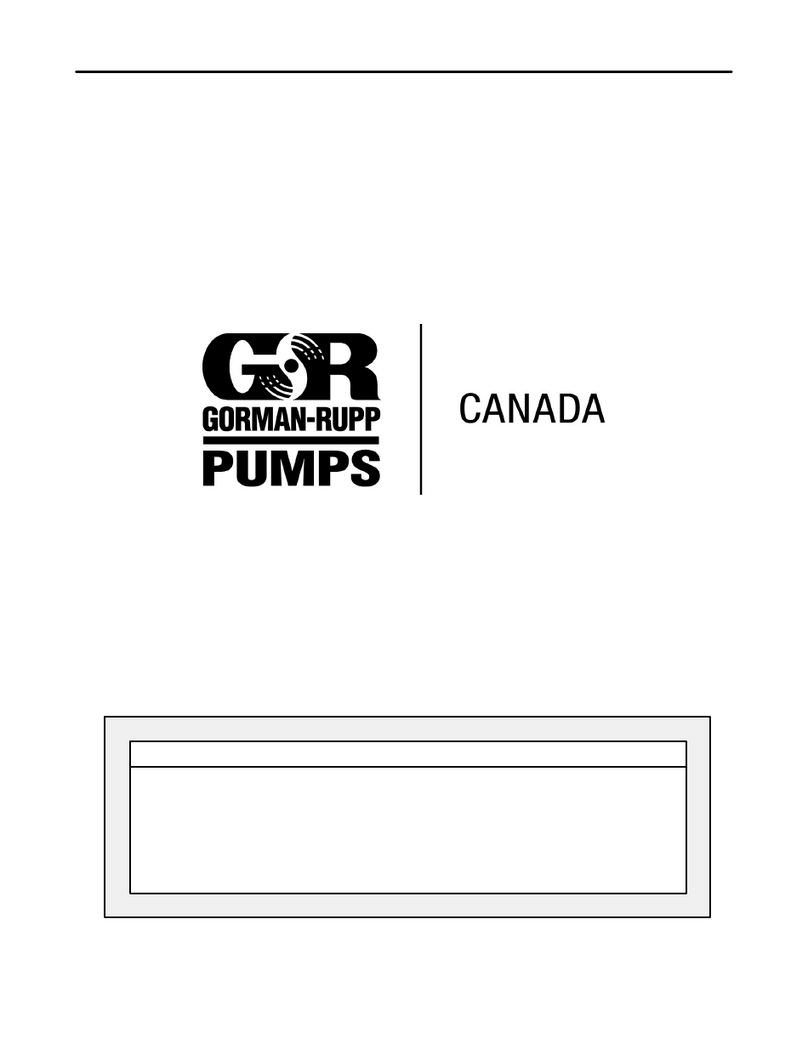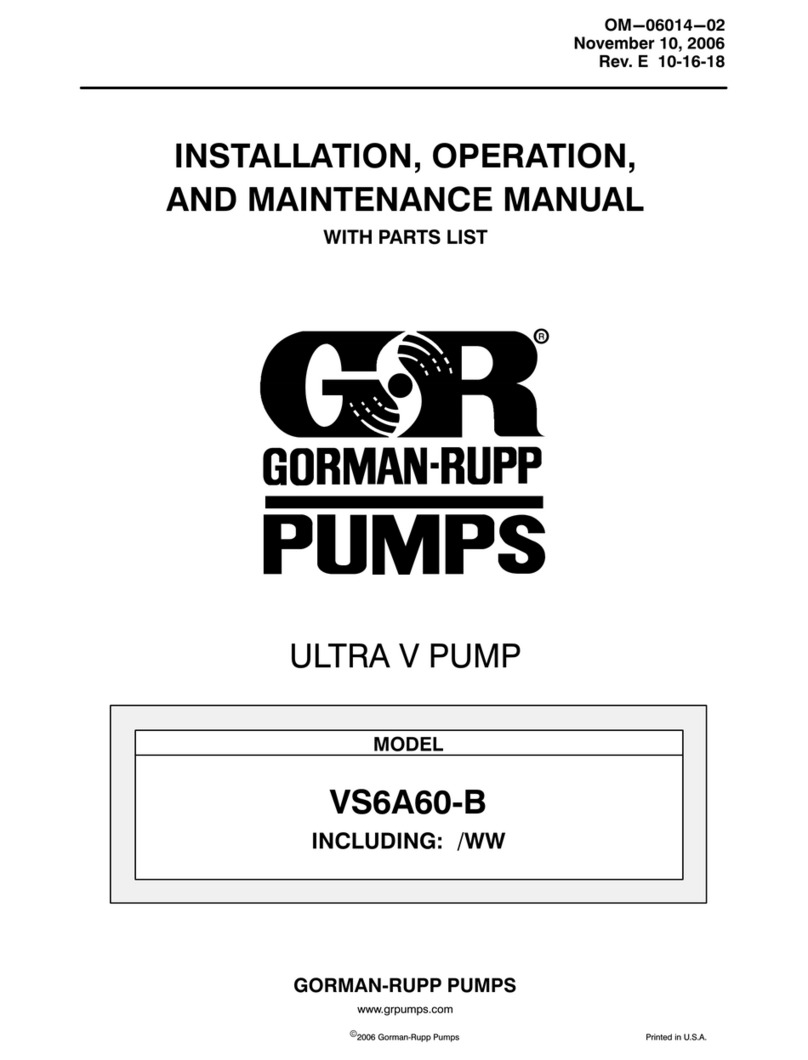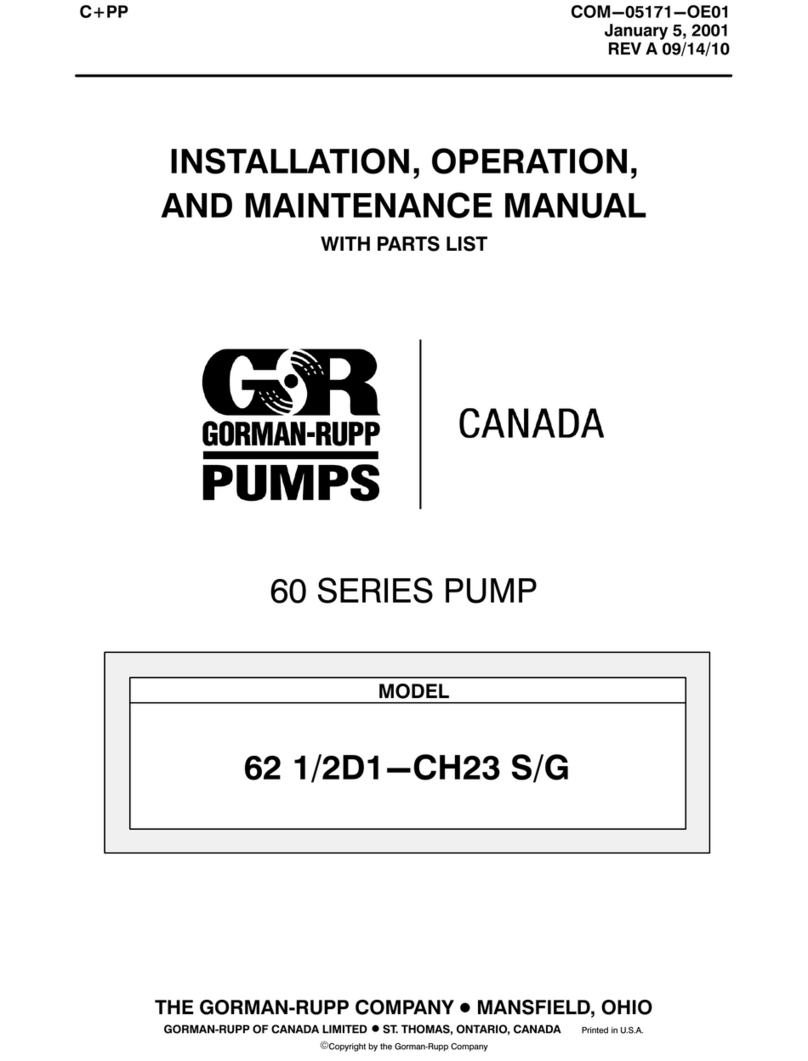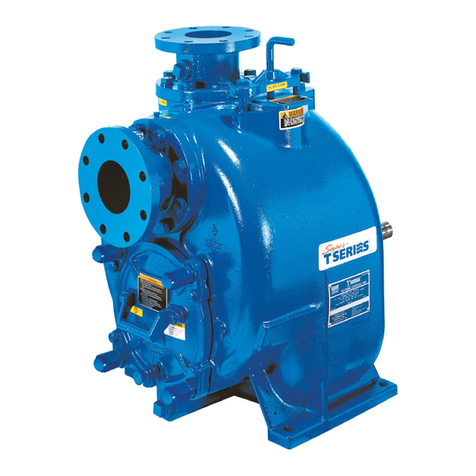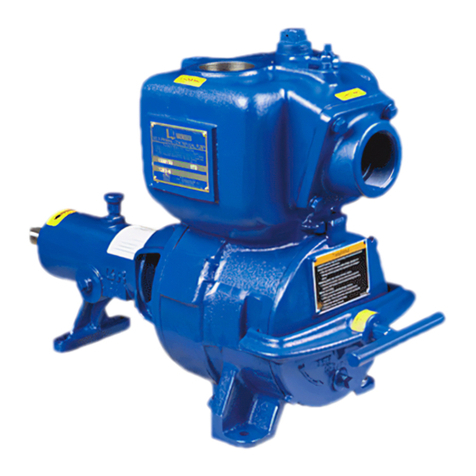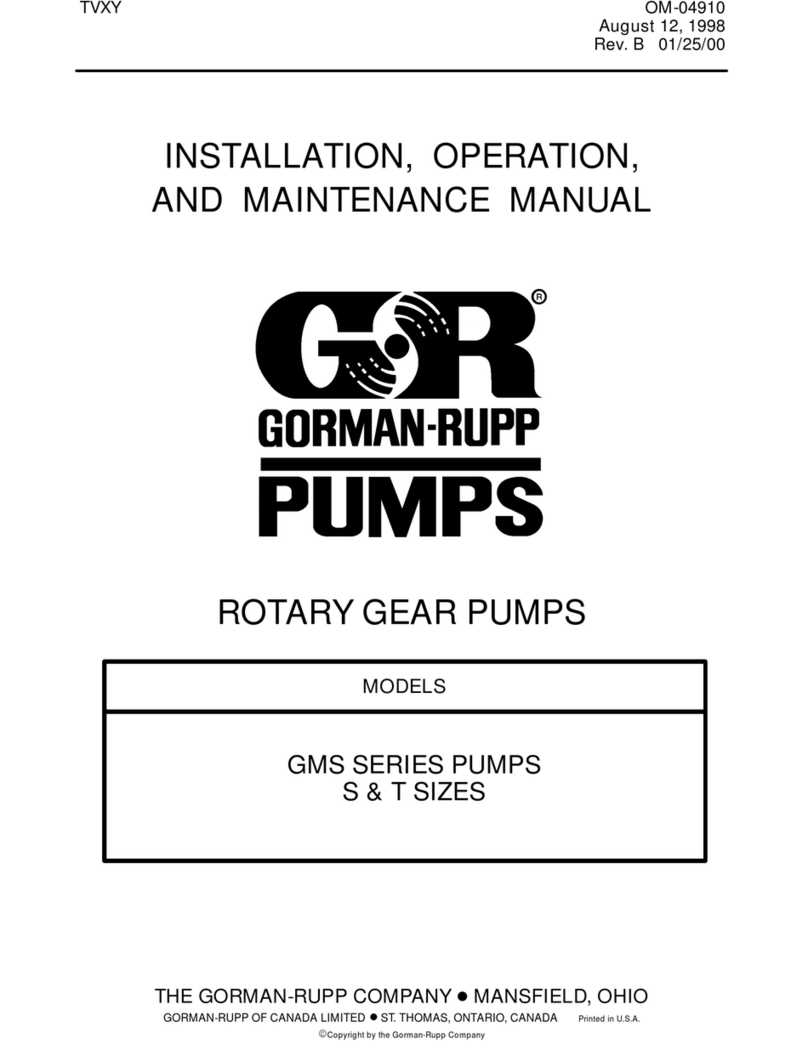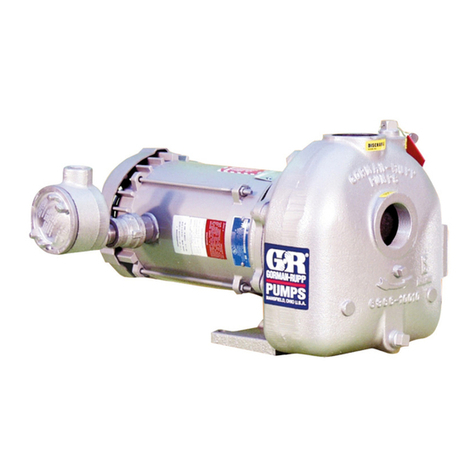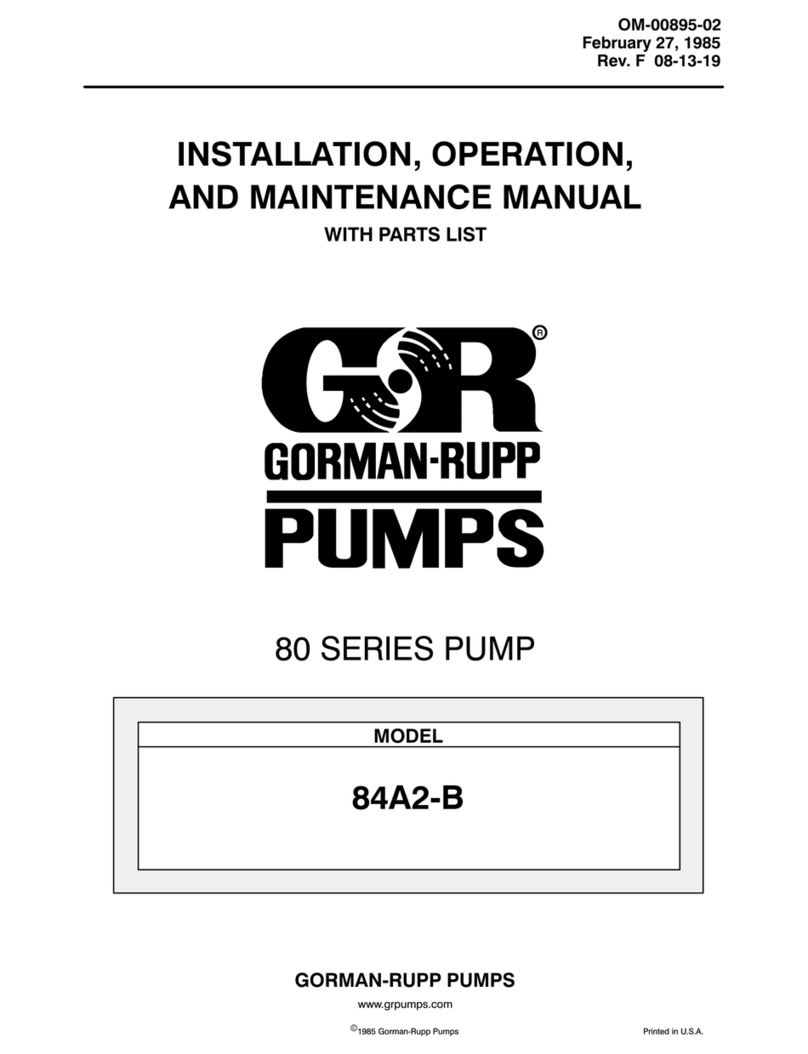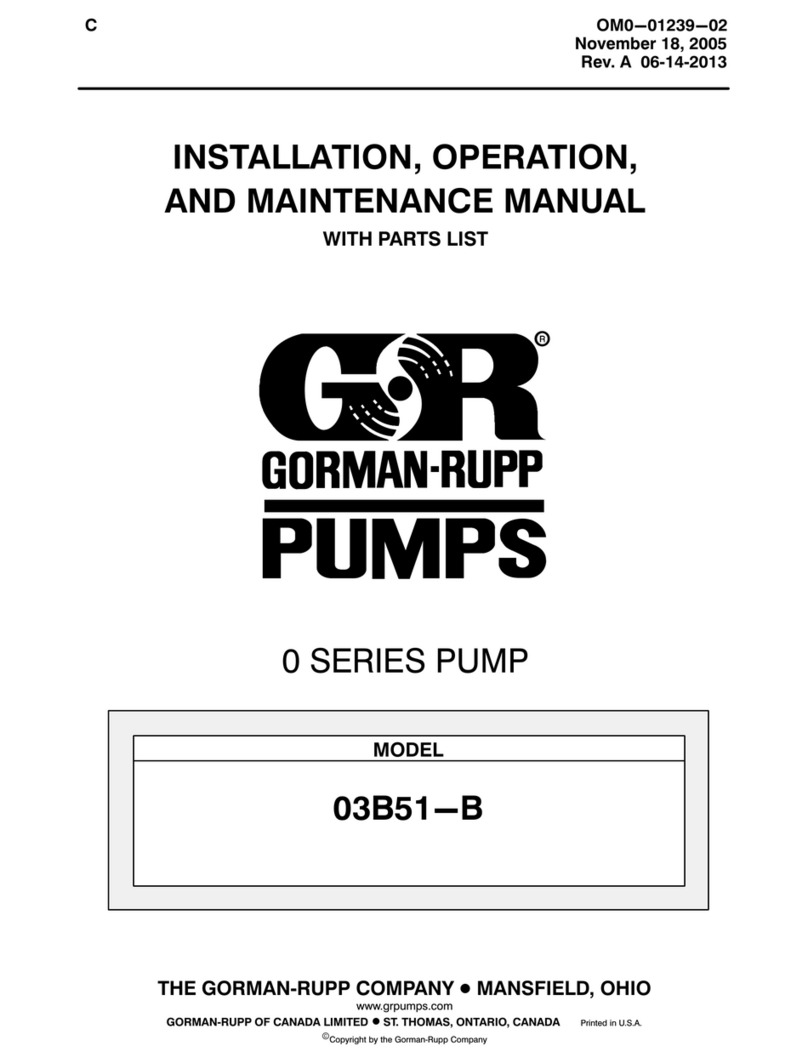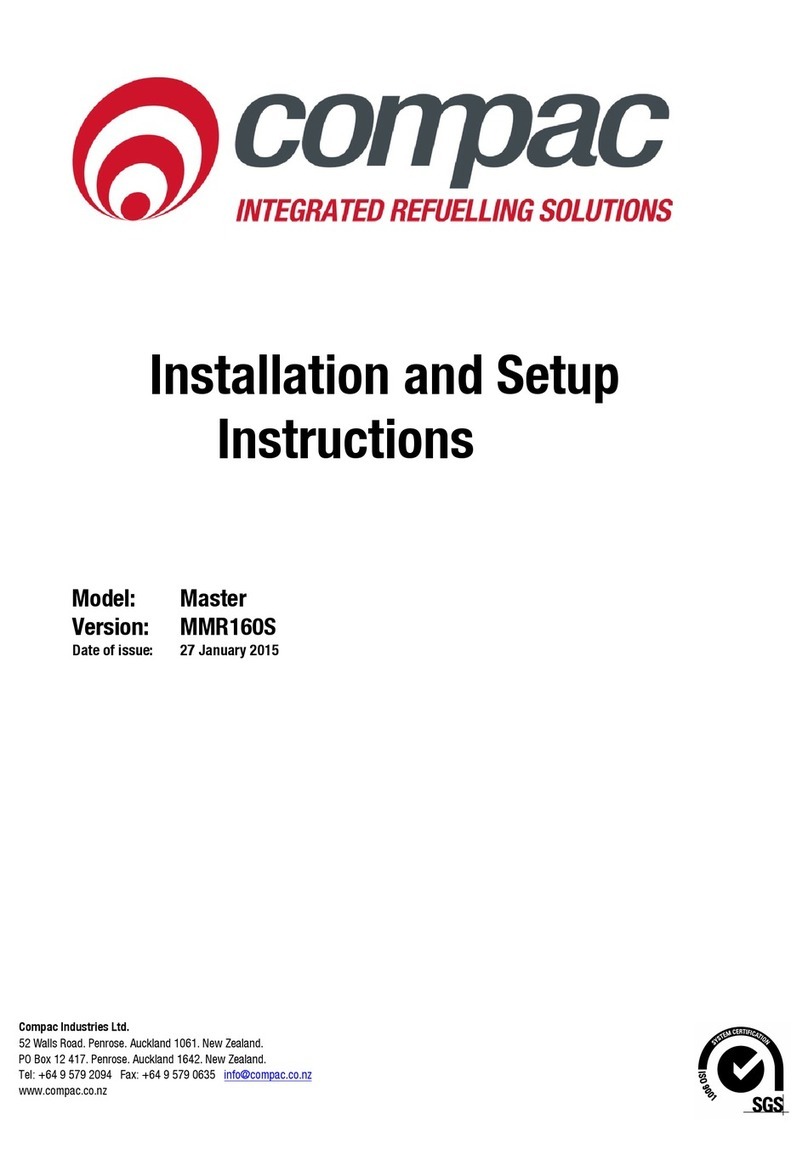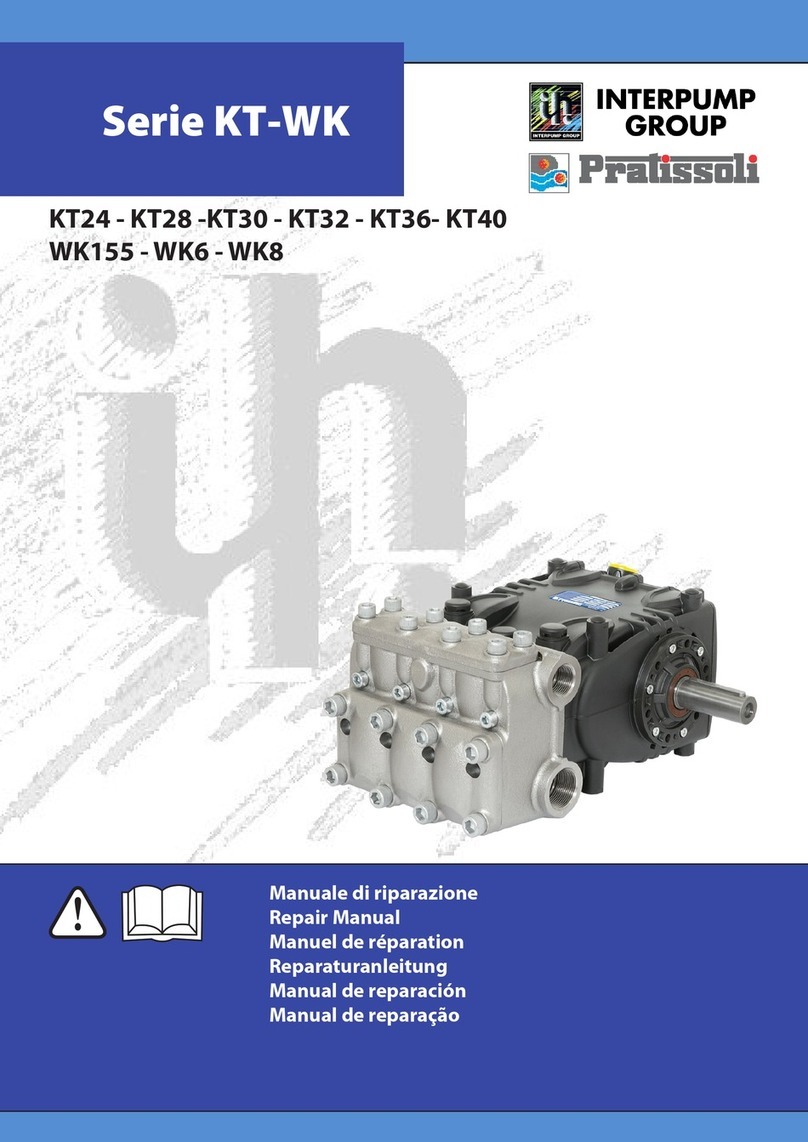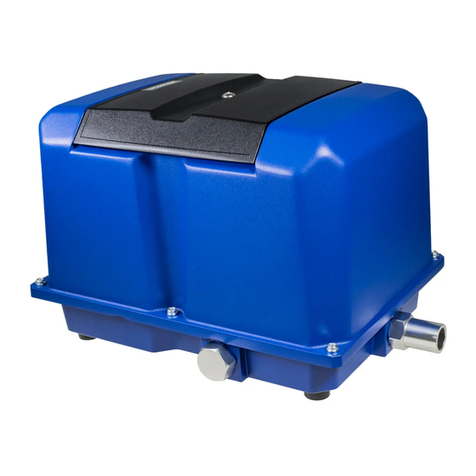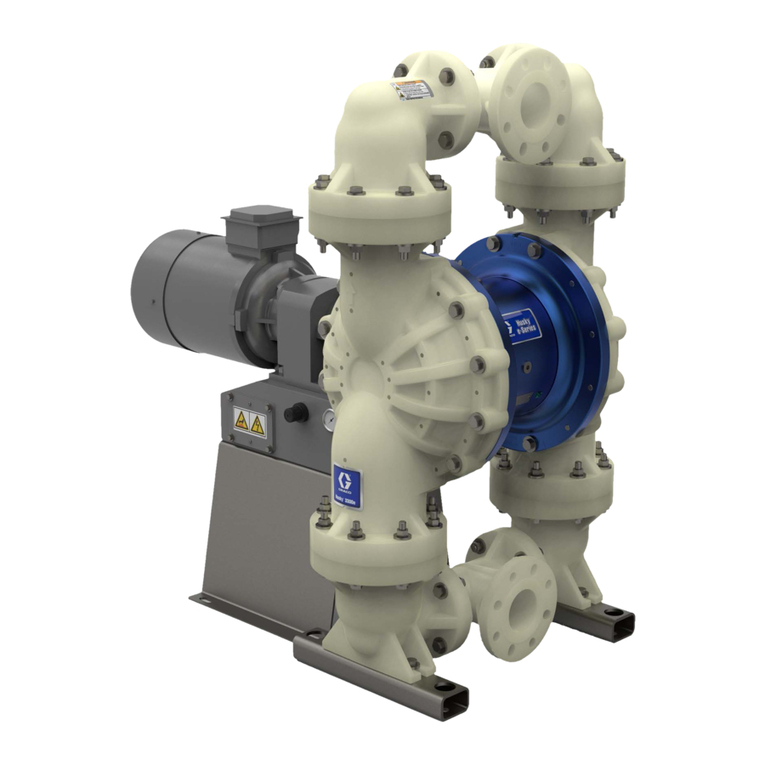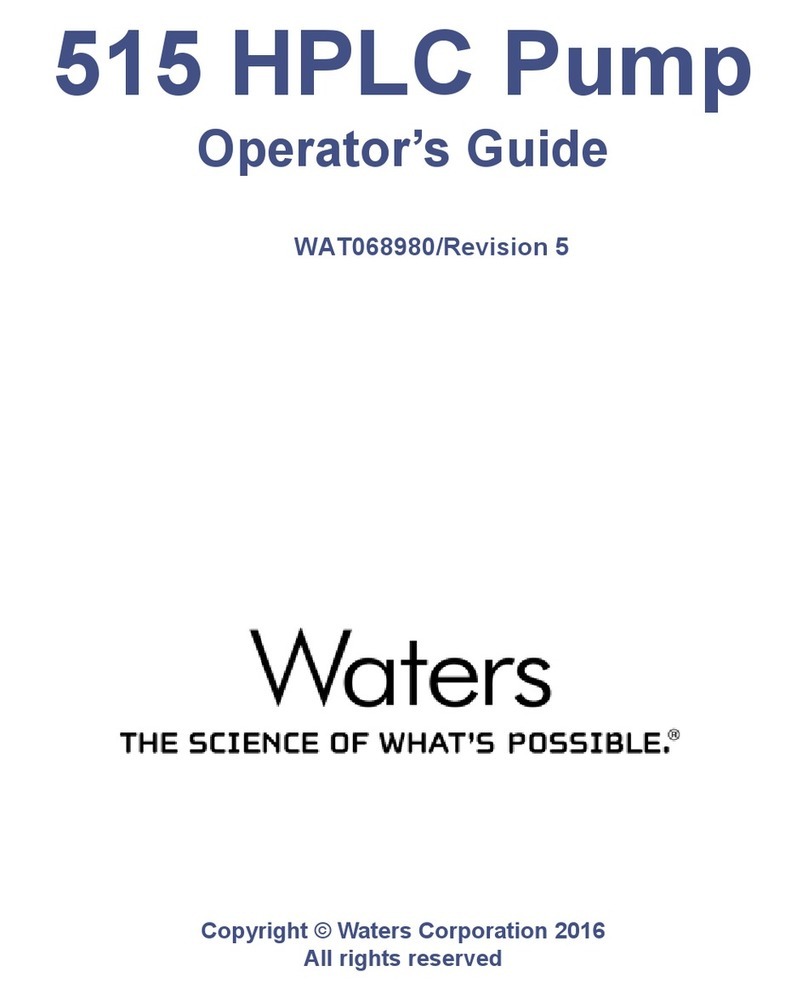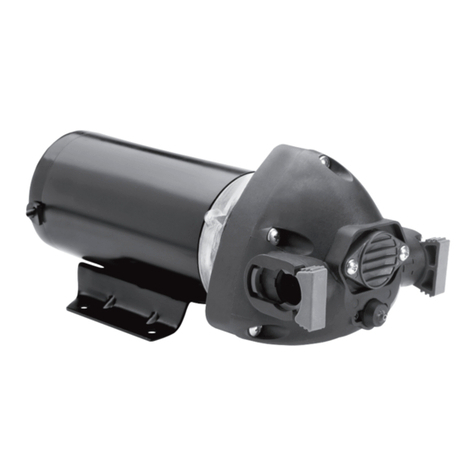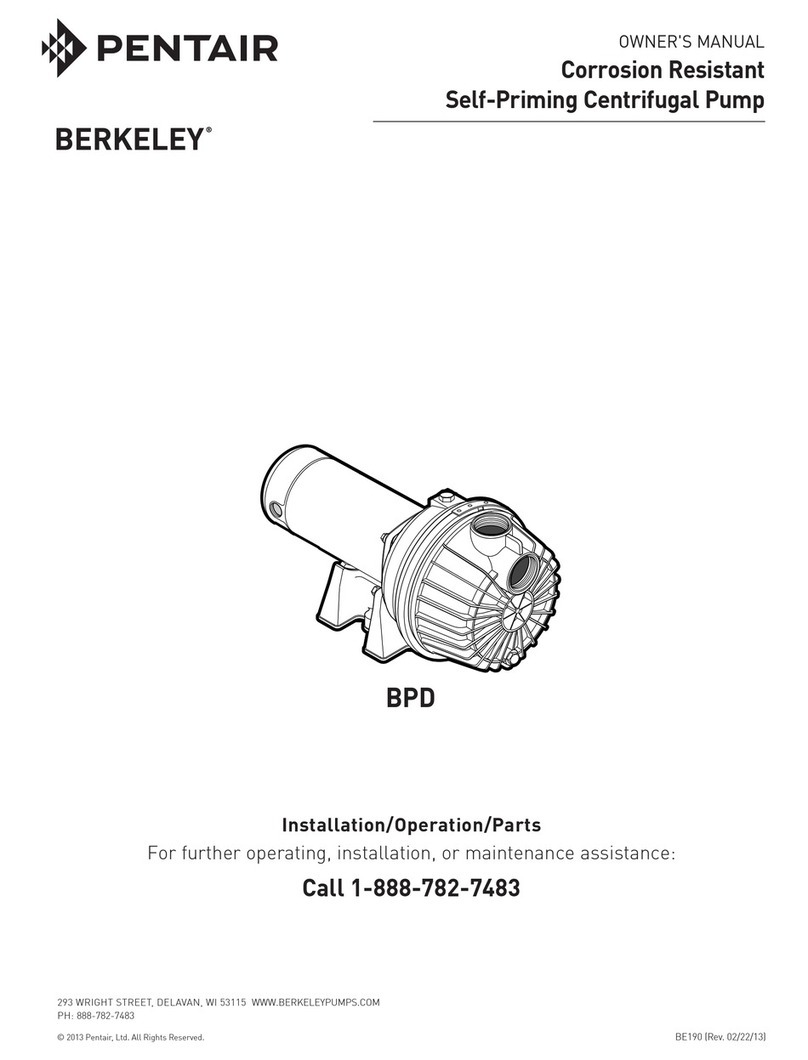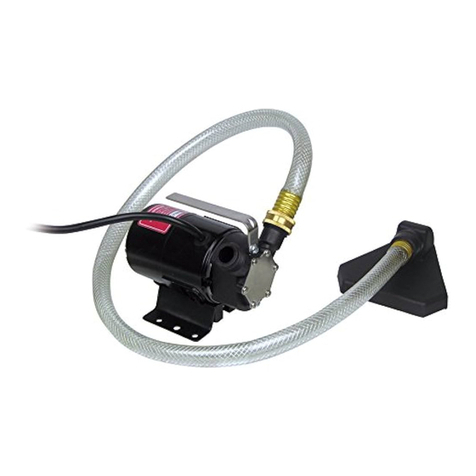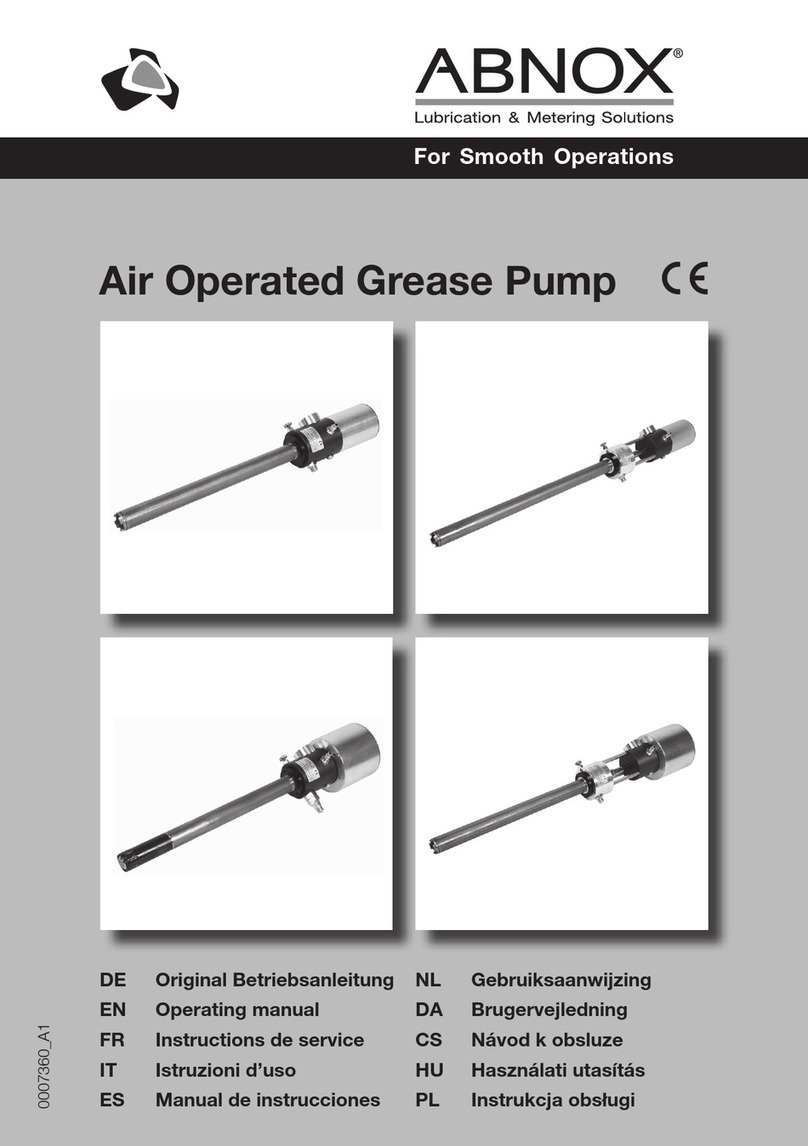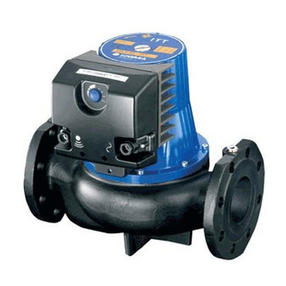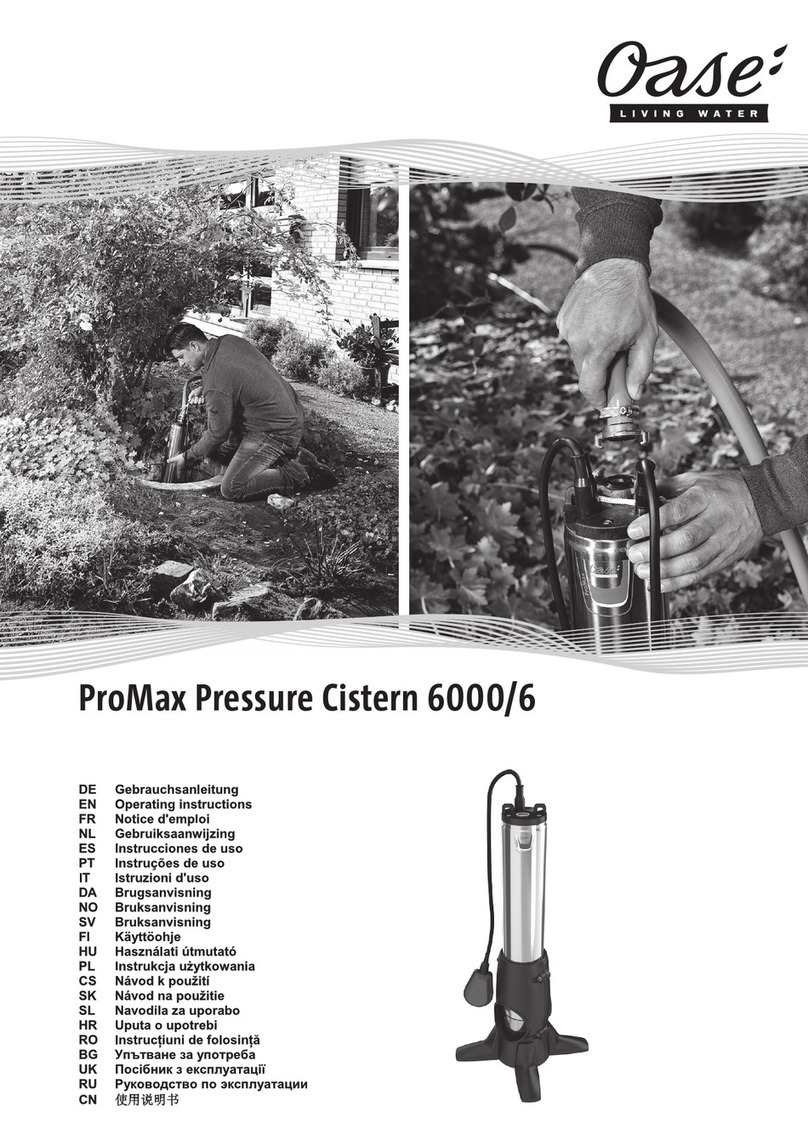
OM--01936TSERIES
PAGE B -- 5INSTALLATION
Do Not install a manual shut---off valve in a bypass
line. If a manual shut---off valve is installed to facili-
tateserviceoftheAirReleaseValve,thevalvemust
not be left closed during operation. See the sup-
plement at the end of this section for additional in-
formation on bypass lines and the Gorman---Rupp
Automatic Air Release Valve.
NOTE
Thebypass line may clog occasionally, particularly
when pumping liquids containing large solids. If
cloggingoccurs,locateandremovetheclog. Ifthe
clog is located between the discharge check valve
andtheAirReleaseValve,thevalvewillnotclose. If
the clog is located in theRelief Valve itself, or in the
line between the Relief Valve and the sump, the
valve will not open.
Do not terminate the discharge line at a level lower
than that of the liquid being pumped unless a si-
phon breaker is used in the line; otherwise, a si-
phoning action could result, causing damage to
the pump.
Inlow discharge head applications (less than 30
feet or 9,1 meters), it is recommended that the by-
pass line be run back to the wet well, and located 6
inches (152,4 mm) below the water level or cut-off
point of the low level pump. In some installations,
this bypass line may be terminated with a six-to-
eight foot length of 1-1/4 inch (31,8 mm) I.D.
smooth-bore hose; air and liquid vented during
the priming process will then agitate the hose and
break up any solids, grease, or other substances
likely to cause clogging.
A bypass line that is returned to a wet well
must be secured against being drawn into
the pump suction inlet.
It is also recommended that pipe unions be in-
stalled at each 90_elbow in a bypass line to ease
disassembly and maintenance.
In high discharge head applications (more than
30 feet or 9,1 meters), an excessive amount of liq-
uid may be bypassed and forced back to the wet
well under the full working pressure of the pump;
this will reduce overall pumping efficiency. There-
fore, it is recommended that a Gorman-Rupp
Automatic Air Release Valve be installed in the
bypass line.
Gorman-Rupp Automatic Air Release Valves are
reliable, and require minimum maintenance. See
AUTOMATIC AIRRELEASE VALVEin this section
for installation and theory of operation of the Auto-
matic Air Release Valve. Consult your Gorman-
Rupp distributor, or contact the Gorman-Rupp
CompanyforselectionofanAutomaticAirRelease
Valve to fit your application.
A manual shut-off valve should not be
installed in any bypass line. A manual
shut-off valve may inadvertently be left
closed during operation. A pump which
has lost prime may continue to operate
without reaching prime, causing dan-
gerousoverheating and possible explo-
sive rupture of the pump casing. Per-
sonnel could be severely injured.
Allow an over-heated pump to cool be-
fore servicing. Do not remove plates,
covers,gauges, orfittingsfroman over-
heated pump. Liquid within the pump
can reach boiling temperatures, and va-
porpressurewithinthe pump cancause
parts being disengaged to be ejected
with great force. After the pump cools,
drain the liquid from the pump by re-
moving the casing drain plug. Use cau-
tion when removing the plug to prevent
injury to personnel from hot liquid.
AUTOMATIC AIR RELEASE VALVE
When properly installed and correctly adjusted to
the specific hydraulic operating conditions of the
application, the Gorman-Rupp Automatic Air Re-
leaseValvewillpermitairtoescapethroughtheby-
pass line, and then close automatically when the
pump is fully primed and pumping at fullcapacity.





















